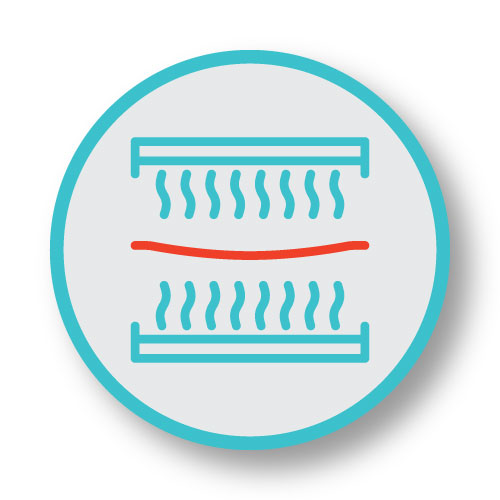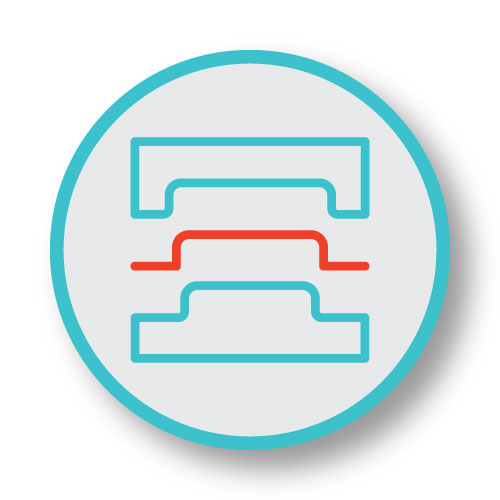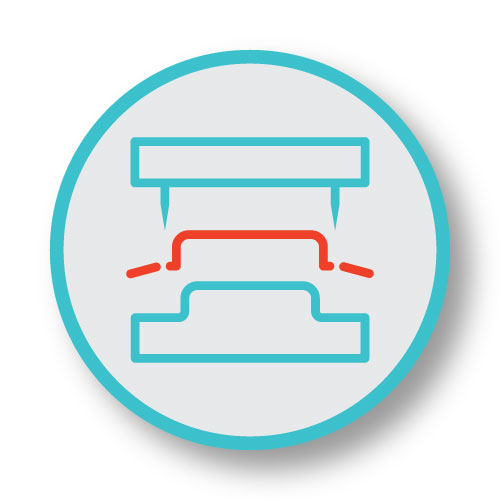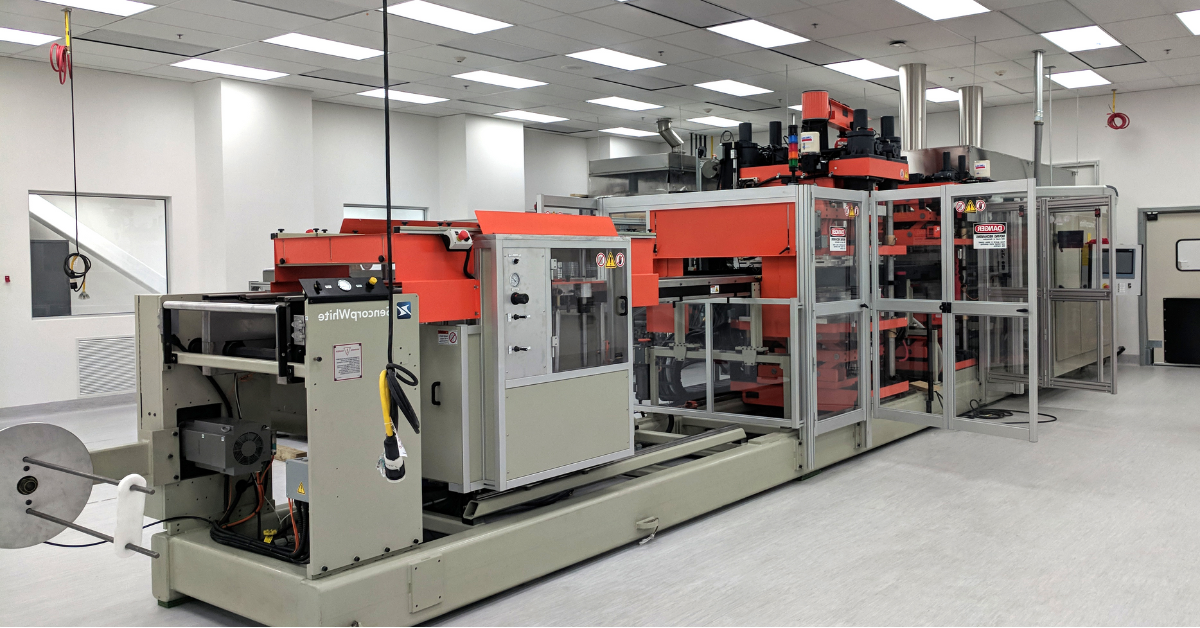Thermoforming is a means of transforming plastic into many shapes. It’s a versatile, cost-effective, and efficient approach to producing products from heavy equipment enclosures, diagnostic housing, packaging, in-transit shipping solutions, and more.
Materials used in thermoforming:
This process can happen for various plastic types. Light gauge plastics include materials such as high impact polystyrene (HIPS), polyethylene terephthalate glycol (PETG), and polypropylene, or heavy gauge materials like polycarbonate and Kydex. Regardless of which material is used, the thermoforming procedure always goes through four basic steps: heating, forming, trimming, and stacking.
Thermoforming equipment:
The materials arrive in either rolled-up or flat rectangles. Depending on the equipment available and the type of project, thermoforming can happen on an in-line or rotary machine. Like the name suggests, in-line equipment produces product linear fashion, which is often better for smaller components. Rotary machines move the plastic in a circular fashion, with specific stations dedicated to loading the sheet, heating the plastic, forming the part, and removing the finished product. Both in-line and rotary processes will produce parts in the same steps.
4 basic steps of thermoforming explained:

1. Heating
The first step in thermoforming is the most important: getting the material up to the right temperature.
Heat makes plastic pliable, allowing it to be easily formed into many shapes. Temperature requirements are based on the type of material and the thickness of the sheet.
It’s critical to manage this stage closely. If the material does not reach the correct temperature, the plastic would not be pliable enough to form a quality product. This would result in misshapen or underformed parts with potential cracking in the material.
Conversely, overheated plastic could become too soft or melt, causing a loss in structural integrity, color change, and a potential release of harmful fumes.
Achieving this precise temperature involves using specially calibrated heating equipment that evenly distributes heat across the plastic’s surface. This ensures uniformity in the material’s pliability, which is crucial for creating parts with consistent thickness and integrity. Moreover, temperature control systems are often employed to monitor and adjust the heat in real-time, preventing the possibility of overheating or uneven heating that could lead to defects.
Brentwood’s engineering team utilizes fluid dynamics studies to continuously test the thermal temperature of our equipment to find the right temperature for each material and part shape.

2. Forming
The part officially gets created during the forming stage of thermoforming.
This critical phase involves using an engineer-designed mold to precisely draw the heated plastic either into a cavity or over a cavity, giving the material its desired shape and contours. The molds also play a vital role in cooling the plastic, helping to set and maintain the newly formed shape.
In manufacturing complex products, particularly those requiring high technical precision such as medical device packaging, both vacuum and pressure forming techniques are employed to achieve optimal results.
Vacuum forming utilizes a vacuum to draw the plastic snugly into the mold, while pressure forming involves pressing the plastic against a mold with significant force. Both of these techniques achieve fine, intricate details and surface textures.
Tooling for molds is essential to create the necessary definition to the heated plastic while also ensuring uniformity and fidelity to the design specifications. Brentwood’s engineering team meticulously reviews designs with customers to guarantee that all products form correctly and do not stick to the mold as they are released, ensuring the efficiency and quality of the manufacturing process. Moreover, attention is paid to the potential for mold wear and tear, implementing maintenance schedules to preserve the integrity of the molds over repeated uses. This comprehensive approach is part of Brentwood’s dedication to producing high-quality components that meet stringent design and functional requirements.

3. Trimming
Trimming cuts the parts away from its original sheet of plastic.
The formed parts move down the former though the use of pin chains to the cutting station where, like a cookie cutter, the pre-designed tool swiftly cuts the plastic to the specified dimensions.
The precision of the trimming process is critical to ensure each part matches the exact design specifications and minimizes waste by leaving as little excess material as possible.
The accuracy of this step impacts the overall cost-effectiveness of production, as excessive material loss can lead to increased expenses and inefficiency in production times. Advanced trimming equipment is installed at Brentwood to guarantee a clean cut, with technologies that adjust for potential variabilities in the plastic sheets’ thickness and texture. In some facilities, automated vision systems are integrated to provide real-time quality checks, ensuring the cut parts remain within acceptable tolerances and high standards of quality are maintained consistently throughout production runs.

4. Stacking
Finished products are advanced with the pin chains to the stacker station and stacked neatly and prepped to be shipped to their final destination.
This critical step ensures the components are correctly organized and prepared for transport, maintaining order and protecting against damage during shipping. The stacking step acts like a hole puncher to pop the part off from its original material sheet and easily stack it with the rest of the products. Effective stacking not only aids in efficient packaging but also optimizes space within shipping containers, allowing for cost-effective logistics.
Excess material is then taken away, ground down, recycled, and formed into other plastic parts. This recycling process plays a vital role in promoting sustainability and reducing waste within the manufacturing cycle. By reclaiming these leftover materials, new products can be developed with minimal environmental impact.
Brentwood’s Thermoforming Capabilities
Our engineering team partners with customers directly to develop a high-quality product. From the initial design stages through to the final production, our team’s collaborative approach ensures that every detail aligns with the customer’s specifications and industry standards.
Unique design elements can be incorporated into the thermoforming molds to make the parts easier to use and unpackage for the end user. This can include features like ergonomic ridges or precise cut-out areas, depending on the part’s intended function and use environment.
Brentwood’s specialty is creating bulk product orders, allowing us to offer competitive pricing and consistent quality for high-volume needs. Before orders are run, the engineering team develops prototypes and connects with customers to ensure the part meets all quality and design specifications. This prototyping phase is crucial as it allows for iterative testing and adjustments, minimizing potential issues during mass production.
With ISO Class 7 cleanrooms in Reading, PA, and Tijuana, Mexico, Brentwood creates thermoformed products within these spaces, maintaining strict environmental controls to prevent contamination for sensitive product applications. The current capabilities of our facilities can produce parts up to 72” in-line and 6″ deep as well as 40” long and 8.5” deep within a cleanroom. Outside the cleanroom, the team can produce parts up to 168” long and up to 70” deep, accommodating a wide range of product sizes and complexities.
Whether the project demands precision, scale, or specialized conditions, Brentwood can meet diverse thermoforming needs with efficiency and expertise. Our experts are here to partner with customers to develop solutions to meet their unique needs.
Have a project that needs thermoforming? Contact us today to get started on your thermoforming project.


0 Comments